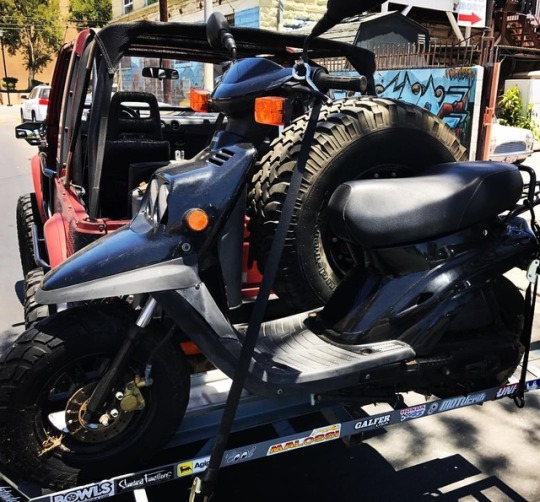#prebugs
Explore tagged Tumblr posts
Text
The chapter of Royston Ellis meeting the Beatles is so wild.
He first hits on George at the Jacaranda. George responds to this with a casual “oh, you’d love my friends” and brings him to Gambier Terrace:
Also dropping into the Gambier Terrace pit was a special guest, Royston Ellis, “King of the Beatniks.” The bearded bard, who featured in TV documentaries and press articles whenever an offbeat teenage angle was needed, was in Liverpool to read his poetry at the university on June 24/25, and he swiftly found himself drawn into the Beatles’ company. The conduit was George, who (with nothing else to do while John, Stu and Paul were in school) was hanging around the Jac when the wandering coffee-bar poet traipsed in, drawn by hip radar to “the happening place.” Avowedly “trying everything,” Ellis was an active bisexual in this period of his life and he took an immediate fancy to George: “He looked fabulous with his long hair and matelot-style striped T-shirt, very modern, which is why I deliberately spoke to him. I was nineteen and he was seventeen and we clicked right away.”15
George took Ellis, his typewriter and his duffel bag back to Gambier Terrace to meet John and Stu. A rapport was quickly established and Ellis was invited to “crash” for a few days—yet another occupant for the filthy back room.
Then Ellis hits it off with John and Stu and wants them as a backing band:
Ellis says he developed a particular rapport with John and Stuart and that they discussed poetry, art and London. When he left, they spoke of doing it again sometime: “We were talking about how I wanted a band to come to London and back me on my Rocketry performances, and they were thrilled at the idea.” Art school studies finished the following Friday, July 1, marking the end of Stu’s fourth year and John’s third and last because the college was waving him goodbye. The exam results, when they came through on August 1, were just as expected: John failed and was out, Stuart passed the NDD, for which he received a certificate. The option was there for him to do a fifth year and attain the highest available qualification, the Art Teacher’s Diploma (ATD), akin to a degree and entitling him to become a teacher … but both he and John were pondering a period as prospectors, and doing something again with Ellis was a definite possibility.
So much so, Ellis is responsible for the first* two mentions of the band in the newspaper:
As for Ellis, so much was he enthused by the possibility of appearing with them again that he soon got the Beatles their first mention in a music paper. It was the July 9 edition of Record and Show Mirror, where a supercilious little article about “the bearded sage of the coffee bars” ended “he’s thinking of bringing down to London a Liverpool group which he considers is most in accord with his poetry. Name of the group? ‘The Beetles’”
….A born publicist, Royston Ellis knew how to manipulate a follow-up, writing a letter for publication that clarified a point in the first. He expressed his intention to find a group that would join him on TV appearances with Bert Weedon and the Shadows, and reiterated, “For some time I have been searching for a group to use regularly, and I feel that the ‘Beetles’ (most of them are Liverpool ex-art students) fill the bill.”
John and Stu decide to go to London on their own to join Ellis…but then chicken out:
By July 10, at the end of his three-year art school vacation, John had arrived at a key decision in his life: he would try to earn his living from the guitar. “I became a professional musician the day I got a red letter from the art college saying ‘Don’t bother coming back next September,’ ” he later said.31 Cyn would remember, “John decided that this [music] was very definitely the life for him. All the ideas that everyone else had for him of making an impact on the art world faded into the back of beyond with incredible rapidity, and with almost no regret at all. Aunt Mimi was distraught. Her view of his future couldn’t have been blacker at that time.”32
These events coinciding, it seems John and Stu decided to head south and hang out with Royston Ellis. Allan Williams is emphatic on the matter: he says John and Stu “split the Beatles and went down to London.”33 Norman Chapman would remember Stu asking him for a lift through the Mersey Tunnel one day so he (or he and John) could hitchhike to London—“They wanted to go down to London and become involved in this poetry-music scene.” Beat poets led a nomadic life by definition. Ellis lived for periods in all sorts of places, but his main base was still his parents’ house, at 31 Clonard Way, Hatch End, Pinner, Middlesex, a pleasant detached villa with the name Denecroft. This was the address he gave John while staying at Gambier Terrace. When Ellis arrived home one day his mother said he’d missed a visit from his “beatnik friends from Liverpool.” He never knew how many or who had come, but—as insane as it appears—John and Stu (and/or as Ellis always thought—hoped—George) had hitched the best part of two hundred miles, taken the trouble of locating his house in leafy Metroland, not stayed or left a message and then gone home again, never returning or making further contact. It makes no sense, but there it sits, illogical and incomplete.
Allan Williams remembers them being “back in Liverpool within a week, because it didn’t work out,” at which point the Beatles “reformed” as if they’d never been away. With bookings only every Saturday, it’s conceivable they did all this without missing one, and perhaps that was always the intention. However, while three independent witnesses (Ellis, Williams and Chapman) all remember something happening, none of the Beatles ever mentioned it—though in their interviews they talked with candor about everything. So it must remain in doubt, an intriguing puzzle unlikely to be solved.
There are two additional curiosities that may or may not be incidental. One is that, in the last days of July, a group of Liverpool art school students, apparently including John and Stu, went to London (or tried to go) to see a Picasso exhibition at the Tate Gallery. Second, and most fascinatingly, a set of photographs taken at this very time (mid-July 1960) in Stu and John’s studio-bedroom-slum at 3 Gambier Terrace includes several people they knew but not John and Stu themselves—perhaps because they were on the Hatch End trip. It was published on July 24 in the national Sunday rag the People in a sensation-splash headlined THIS IS THE BEATNIK HORROR. It’s as if a man on a flaming pie was pointing down at Flat 3, Hillary Mansions, Gambier Terrace, Liverpool 1. In six months, three Beatles moved in and the fourth was hanging out, the nation’s best-known beat poet had come here to get them high, and now, when a Fleet Street journalist and photographer were looking to substantiate a load of old tosh about dirty beatniks—reportage that could have been cooked up anywhere in the country—they landed in Stu and John’s room.34
Though hugely amusing, the feature had one unfortunate side-effect: because the address was given (a “three-roomed flat in decaying Gambier Terrace in Liverpool”) and some of the occupants (“well-educated youngsters”) were named, the landlord gave the tenant, Rod Murray, notice to quit. On August 15, everyone—Rod, Diz, Ducky, Stuart, John and sundry other bodies who’d joined them—would be out on the street.
—Mark Lewisohn’s Tune In, Ch 15 (May 31–Aug 15, 1960)
And Lewisohn is just like yup nothing to see.
So what the hell happened here? Was it just a school trip? Or was it a deliberate split?
#royston ellis#beat poetry#beatniks#tune in#1960#early liverpool#bug mysteries#i think about this once a week and just found the bit again#mine#mark lewisohn#reading tune in#prebugs#*i think they may have found an earlier mention since tune in printing#i have a june newspaper clip date in my timeline#john and stu#young george#june 1960#queer bugs#reading riding so high#joe mentions the dates of royston’s liverpool university appearance#june 24 1960 and davies says the first beetles mention in the newspaper is june 11#so theres some conflict there when was the first#just learned royston ellis died earlier this year#but kerouac website writers reached him in 2020 and he still claimed they got the BEAT ideat in the name from him#theyve got a clipping from june 5 with silver beetles#but lewisohn references a june 2 clipping with the A (beatles)#so thats too early for royston maybe they were deciding and flipflopping he helped settle on one i can see that#lalala i cant read its first mention in a music paper rather than a general newspaper
107 notes
·
View notes
Photo

Gas runner #prebug #yamahazuma #2stroke (at Los Feliz Service Station & Mini Mart) https://www.instagram.com/p/B-GpNh9gt0mVorPW9hx4i31uHsWdRfy0bn89XU0/?igshid=1pbuhl733kxd4
0 notes
Text
Ringo's Love of Jive Dancing
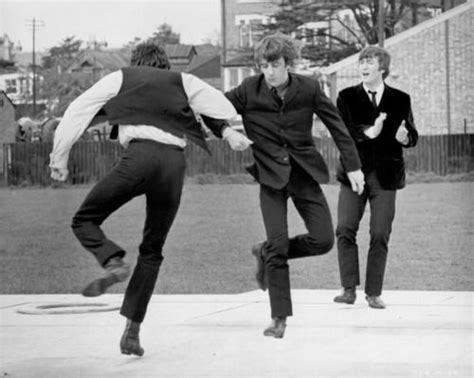

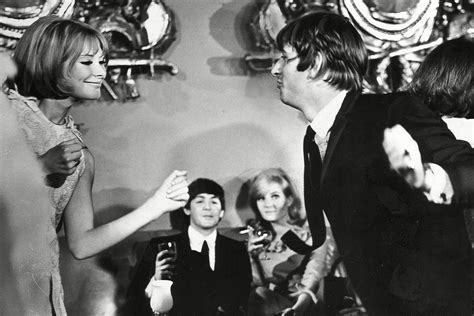



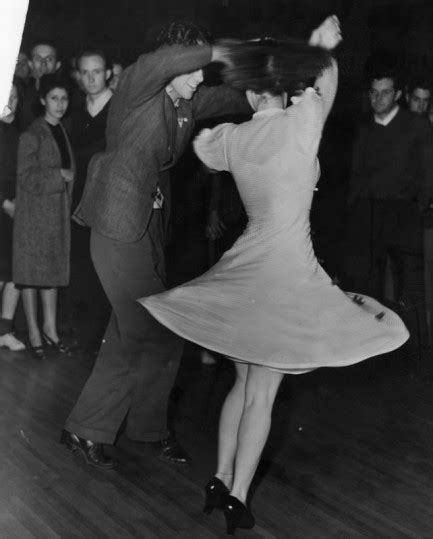



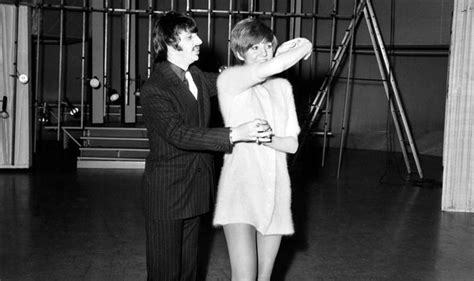


Playing skiffle with Eddie Clayton introduced a welcome way out from the street-corner existence Richy Starkey had known more than a year. It would take a long time to remove himself completely, but being with a group was an alternative to “walking” with the gang, and when he and Roy weren’t doing one or the other they were often dancing. Both were athletic and acrobatic jivers, accomplished rock and roll dancers able to flip, flop and fly their female partners, hold them up in the air and send them scooting through their legs.
Richy was a good jiver and so was I. We used to go to all the hops, to the Rialto and the Cavern, and girls liked to dance with us because we could do it. We had denim suits and denim jackets so the lads and girls in the Cavern called us “the Binmen.” We had regular jiving partners and loved it. But we were seriously threatened in the Rialto one night. Some feller got stabbed in the face with a pair of scissors and I was told, “You and your mate are next.” We were out of there like a shot. We didn’t like that at all. That was me and Richy—out the door.
—Tune In (Ch. 7, July 15–Dec 15, 1957)
A jukebox pumped out records when the Hurricanes took a break and [Ringo] was easily the best jiver in the group, never short of a dance partner. Margaret Douglas, on holiday here from Liverpool, says, “Ringo was a brilliant rock ’n’ roll dancer. He knew all the moves.”26
—Tune In (Ch. 15, May 31–Aug 15, 1960)
#i can find no photos of 50s richie jive dancing and that is a shame#but i love this quote and needed an aesthetic post to bring it alive#ringo starr#richard starkey#none really show the big jive moves#which are crazy and incredible and a good partner is worth their weight in gold#ringo#i cheated with the middle twirl thats just stock#the rest are all ringo#dancing bugs#mia farrow#cilla black#astrid kitcherr#ringo stories#ringo appreciation post#prebugs#reading tune in#i love all the young ringo details#i really need to post more i dont see enough ringo posts on my dash#underrated how dangerous those dance halls got#that john scissor story from hambug gets a lot of play but all he did is chop up a dress#the teds are gouging peoples eyes out with them at dances when someone eyes their girl wrong i mean yikes
211 notes
·
View notes
Text
Paul’s Trying To Get To You
The thread of this song weaving in and out of Paul’s most formative music experiences
Oct 1956: Elvis’s debut album is released in the UK as Rock ‘n’ Roll and the B-side includes Trying to Get to You

I just had to reach you, baby / In spite of all that I've been through / I kept traveling night and day / I kept running all the way / Baby, trying to get to you.
Well if I had to do it over / That's exactly what I'd do / I would travel night and day / And I'd still run all the way / Baby, trying to get to you
[full lyrics]
Jan-June 1957: Ian James gets the Elvis record and a guitar
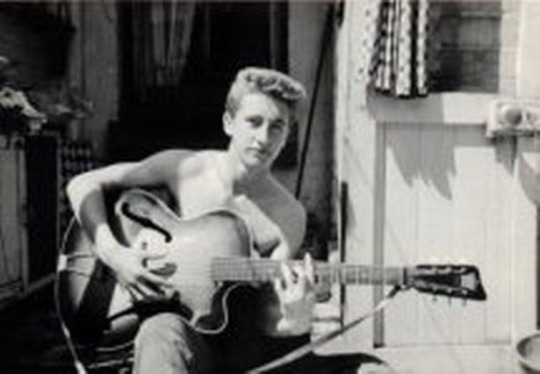
“It was in this time frame that Paul formed a closer friendship with Ian James, an Institute boy (in his year) he’d known since 1954. Ian was also into rock and skiffle and he’d recently been bought an acoustic guitar by his grandparents, at whose house he lived in the Dingle. (Every guitar had a maker’s name: his was a Rex.) The two boys became good pals on the strength of it. While they tended not to see each other in the evenings, because they lived some distance apart, Paul often went to Ian’s house for an hour or two after school—they walked there together down the hill from the Institute—and Ian sometimes went to Forthlin Road at weekends, taking his guitar with him. Ian James held a triple attraction for Paul: he was an intelligent, decent and affable lad, he had some rock records, and he had a guitar—an unbeatable combination.
In the front room at home I had a table-top portable record player, three speed. I remember playing “Blueberry Hill” by Fats Domino over and over, just the first line and then I’d pick up the needle and put it back at the start. I also had Elvis Presley’s first album, which we played time after time after time, with “That’s All Right Mama,” “Trying to Get to You,” “Lawdy Miss Clawdy,” “I’m Gonna Sit Right Down and Cry (Over You),” “Mystery Train” … Elvis was the one to copy, he was the hero. He had everything: the charisma, the looks, the voice. Frank Sinatra had only one style but Elvis could do anything—gospel, blues, rock and roll, romantic ballads. There was nobody else like him. Paul and I talked about Elvis all the time.15
The Rex guitar was ever at hand. Ian showed and reinforced to Paul those three chord fundamentals that would get him started, C, F and G or G7, the basis for pretty much every song they loved.”
—Tune In (Ch. 5, Jan-June 1957)
July 1957: Paul is invited to join the Quarrymen and trades his trumpet for his first guitar
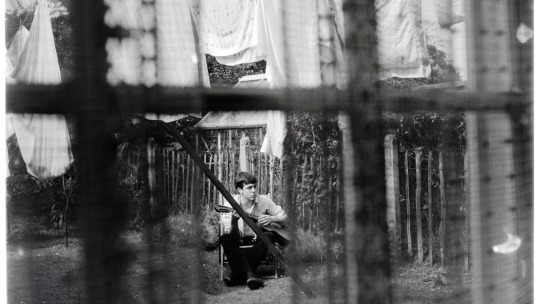
At some point in July 1957, Paul finally got his first guitar. It had been a long time coming and he was desperate. As he couldn’t afford to buy one he had the bright idea of swapping his trumpet for it, the one his dad had bought him two years earlier. Jim didn’t mind—it was clear where Paul’s interest was. “I traded in the trumpet for a £15 Zenith guitar from Frank Hessy’s. There was a feller there called Jim Gretty and he showed us (me and George) a great chord. I never knew its name—we called it ‘a jazz chord’…”
Mike McCartney has said of Paul and his first guitar, “He would get lost in another world. It was useless talking to him—I had better conversations with brick walls.” Paul played the guitar everywhere, even on the bus. At home he played it in the bath and sitting on the toilet. “The fine acoustic of the toilet area was always very appealing to me. And it was also very private, about the only private place in the house. I used to sit there for hours—there and the bathroom. Dad would shout, ‘Paul, get off that toilet!’ [And I’d reply] ‘I’m practicing!’ ”4
…Rod Davis has a recollection of Paul dropping in to see a group rehearsal at (of all places) Mimi’s house, and Eric Griffiths says the group all went to Paul’s house one afternoon for a rehearsal together—something Paul has never mentioned. (Like almost everything to do with the Quarry Men, solid information is lacking.)
…Ian James says he and Paul struck up an informal musical duo: “We used to take our guitars around to parties and play a few numbers. Have guitar will travel—wherever we went our guitars went too. We played songs from that first Elvis LP: ‘Trying to Get to You,’ ‘Lawdy Miss Clawdy,’ ‘Mystery Train’…
—Tune In (Ch. 7, July-Aug 1957)
Aug 1957: Paul’s away at summer camp and then on holiday but glued to his guitar
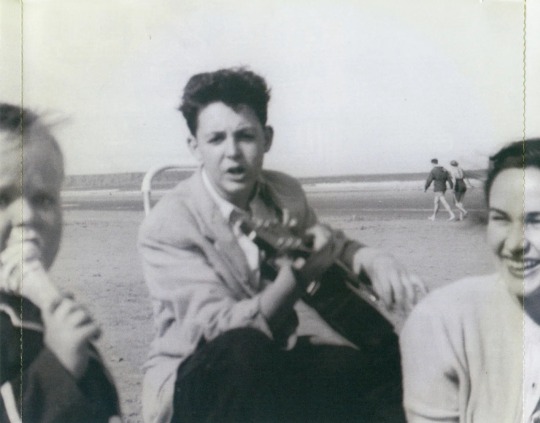
[O]n August 7, the Quarry Men played the Cavern again…This Cavern booking would have been Paul’s Quarry Men debut but for him being away with the Boy Scouts at summer camp—another ten days of wet feet, wind and Woodbines. The 19th City troop’s destination this year was the Peak District—Callow Farm, Hathersage, Derbyshire—and both McCartney brothers went. Paul (inevitably) carted his Zenith along with his sleeping bag and tin mug. Almost as soon as they’d pitched tents, Mike had an altercation with an oak tree, badly breaking his arm; he was taken to the hospital in Sheffield while Paul remained at the camp and entertained around the fire with Elvis’s “Trying to Get to You.”13
Mike was in the hospital four weeks, his plastered arm in a sling, and on the day of his release—the last full week of the school holidays—Jim arrived in Sheffield with Paul and revealed they were all heading straight off to Butlin’s. Bett and Mike Robbins had fixed them seven days at Filey, on Yorkshire’s east coast…
Ever the keen photographer, Mike operated the camera single-handedly to take a fascinating photo of Paul on Filey beach with Bett Robbins and her infant son Ted. Paul is perched on Ted’s pushchair and playing the much-traveled Zenith. The photo could be the closest taken to the date he met John Lennon, showing a 15-year-old who’s come through his chubby period and is looking good.
—Tune In (Ch. 7, July-Dec 1957)
Oct-Nov 1957: Paul plays his first gigs with the band as John’s equal
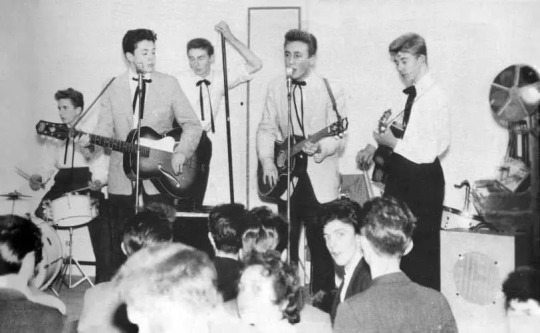
In images of the Quarry Men before Paul joined they’re all wearing different clothes. In the first photo of the group with Paul they have a uniform look, and a sharp one at that: white shirts with black bootlace ties and black trousers, and John and Paul (only) are also wearing jackets on top, white or cream—it’s Paul’s “white sports coat” and something similar John has managed to acquire. This was undoubtedly Paul’s doing, reaching back to his experience at Butlin’s in 1954 when he saw how a singing group in matching gear claimed everyone’s attention. He’d brought the thinking early to John, and John had bought it. And something else is compelling about this Quarry Men photo: although it’s John’s group, new boy Paul is not at the back with Colin or Len, or to the side like Eric, he’s up front with John. Lennon and McCartney are clearly the front line of the Quarry Men, strumming crummy Gallotone and upside-down Zenith, and they’re the only ones with vocal microphones. The group is the two of them and three others. When one sings lead the other provides harmony; often they sing the lead in unison—and their voices go together.
One can only surmise what they sang into those microphones. Nigel Walley remembers plenty of rock in the repertoire in this period and not so much skiffle, including several Elvis numbers—“All Shook Up,” “Blue Moon of Kentucky,” “Heartbreak Hotel,” “Hound Dog,” “Lawdy Miss Clawdy,” “That’s All Right Mama” and “Trying to Get to You”—as well as “Be-Bop-A-Lula,” “Blue Suede Shoes” (Carl or Elvis), “Come Go with Me” and “Twenty Flight Rock.”
—Tune In (Ch. 7, July-Dec 1957)
Jan-May 1958: Paul writes In Spite of All the Danger and John wants to record it
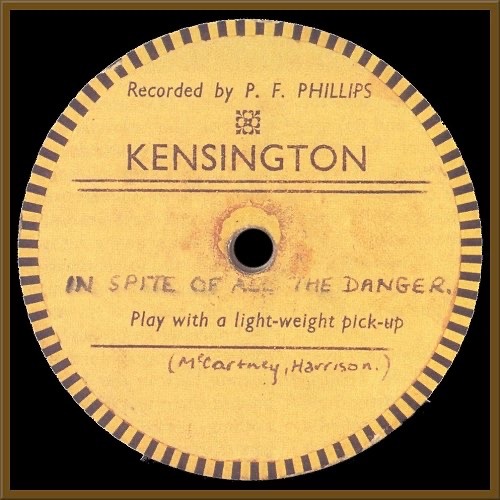
As George knew several more guitar chords than John or Paul, every time he showed them a new one they tried to write a song around it36—and it was in this period, possibly at Upton Green, that Paul wrote one he called “In Spite of All the Danger,” a chugging and melodic country-flavored number with a couple of extended lead guitar solos created by George. For this reason, the song was a unique deviation from the Lennon-McCartney credit: it went down as McCartney-Harrison.
The tune of “In Spite of All the Danger” was entirely Paul’s, but it leaned heavily on the melody of Elvis’s “Trying to Get to You,” a song that includes the lyric “[in] spite of all that I’ve been through.” Using an existing song as inspiration for the writing of another is standard practice, but the rock and roll era was already littered with outrageous examples of plagiarism seemingly free of legal action—possibly because the song being copied was not entirely original to that composer either.
…John decided the Quarry Men should make a record, and the others needed no persuading—just 3s 6d each. This time the answer to “Where we going, Johnny?” was 38 Kensington, where one Percy F. Phillips ran probably Liverpool’s only recording studio and record press.
Seventeen years later, without the advantage of hearing it in between times, John recalled what he could of the session: “The first thing we ever recorded was ‘That’ll Be the Day,’ the Buddy Holly song, and one of Paul’s called ‘In Spite of All the Danger.’ It cost us fifteen shillings and we made it in the front room of some guy’s house that he called a recording studio.”
…John again sings lead on “In Spite of All the Danger,” Paul provides more fine harmonies throughout, and George adds an “ah” backing. It’s said Colin and Duff hadn’t heard the song before, and so were feeling their way through it, but it’s not solely for this reason that it plods somewhat. Though the debt to “Trying to Get to You” is clear, it’s still an original number and an interesting, attractive one at that, written by a boy of 15—a fantastic achievement.
—Tune In (Ch. 8, Jan-May 1958)
#tracking this thoroughline and realized it came up more often than i thought#its the mention of paul singing it at camp that really made me lol#the thematically appropriate soundtrack to this story is wild isnt it#bug influences#elvis#trying to get to you#its actually the one elvis song i enjoy listening to#in spite of all the danger#mine#bug guitars#i see a lot of people say paul had a guitar at the fete but idk#paul being desperate enough to do a quick trade to buy a guitar tells me its after the invite#ian james#poor ian paul got the guitar lessons got the record got the white jacket and then went and used them to impress john#prebugs#the quarrymen#1956#1957#thick as thieves#1958#1950s#mark lewisohn#reading tune in#trying to get essential bits saved and this got long#i feel like every tune in post should have an asterisk#*beatles history according to mark lewisohn whose citations are a mess but preferable over none at all#i left thecitation numbers in to reblog with sources at some point
111 notes
·
View notes
Text
Spring 1958: Access to All The Records
A million years ago, I had heard somewhere about how the Beatles had early on gotten ahold of the Lomax ethnomusicology collection: recordings of black folk singers in the American South. I’ve always wondered when? how? I myself didn’t get the chance to hear them until college with access to the music department’s library.
Listening to their 1960 home recordings, I felt convinced they’d had them by then. I Don’t Know (Oh Johnny) especially sounds like a teenage boy’s attempt to imitate those recordings. But where on earth would have have gotten access to them as teens?
Well, it looks like Lewisohn tracked down the source. In Spring 1958, John meets Tony Carricker at art school:
By some distance, friendships were the most attractive aspect of art school life for John. He and Tony Carricker gravitated toward each other on the basis of a shared love of music. As Tony puts it, “Early rock freaks found each other like drug takers will find each other.” He still recalls their first conversation, as they walked down the hill into town: “It was like an interrogation: ‘Have you got this?’ ‘Have you heard that?’ ‘Oh, you’ve got that, have you?’—it was like being vetted. I was in.”41 Tony had “Bloodshot Eyes” by Wynonie Harris, he had red label Vogue 78s, he introduced John to Bobby Freeman’s “Do You Want to Dance,” he had country blues and he loved Chuck Berry; when John found out Tony had memorized all the words of “Roll Over Beethoven” he got him to write them down for him. He recalls overhearing John saying to somebody, “He’s got all the records!”
Tony was one of those enthusiasts not merely prepared to accept whatever was available in the local shops but to seek out scarce sounds. He was a gatherer, hungry to expand his knowledge. He’d discovered that the cultural department of the American Embassy in London loaned Smithsonian Institution and other rare records free to applicants, on trust. Packages containing discs by Bessie Smith, Ida Cox, Lead Belly, Big Bill Broonzy, Blind Willie Johnson, Sleepy John Estes and other such fabulously exotic creatures, remarkable field recordings from the American South and rare studio sessions of the 1920s to 1940s, would be dispatched via Royal Mail from Grosvenor Square to Tony’s tiny house in Widnes, the return postage prepaid.
—Tune In (Ch. 8), Mark Lewisohn
Thank Tony, the American Embassy, the Smithsonian, and Royal Mail.
#incredible#this explains so much#even just where they were getting lead belly and bessie smith#this is the most useful think lewisohn has done in 1000 pages#mystery solved#prebugs#1958#lomax collection#reading tune in#bug influences#look at the effect of a simple government program#i cannot stress enough how lucky they were to have had access to these#add in the advantage of NEMS in the 60s which almost definitely helped put early motown on their radar from the start#and the bug obsession with listening to anything they could get their hands on#you can see the real advantage they had as songwriters by 62-63#that said these recordings came with zero context and so these boys emulating them are completely clueless#about the entire culture that births them
33 notes
·
View notes
Text
This young!George story from Paul has me howlinggggg

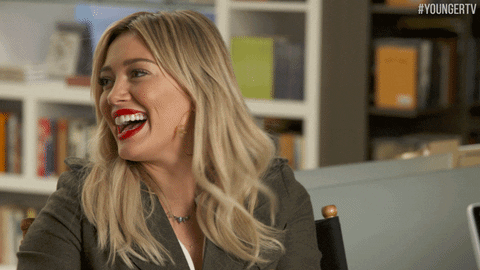
#george the goat#why is this so easy to see the image omg#and the face hes making w his glib matter of fact response?#😂😂😂#but also#♥️♥️♥️#george stories#one of a kind#paul and george#original bros#i want a year on this story but id say its prejohn#playground sounds like when they first meant what 12ish?#which refutes those ridic folks who act like george was just acting like a john mini me in those early years#this is just george#many years from now#prebugs#apologies if this is your original post#i wanted to reblog this but tumblr crashed and i losted the post#so all i had was the screenshot i took while lmao lol#baby bugs
6 notes
·
View notes
Photo

With a bread knife and a lemon zester I got rid of the annoying hump on my Zuma prebug seat. 😁 (at Los Angeles, California) https://www.instagram.com/p/CPUnP2brazfeIEatOuSSpakYma511p-690ZL8Y0/?utm_medium=tumblr
0 notes
Text
In the least, this supports that they had an active hand in AHDN script edits. I guess it could have evolved over time into a common inside joke and the writer heard them use it. The writer observed them for a few days before writing but what are the chances.
It’s Paul’s line in the film and is used to answer a question similar to those he got about Jane Asher. Sure, he’s living in the Asher house at this point. But coupled with the biting teenage influencer bit, it does point to at least John taking a heavy pen to the script.
John does say in the 1964 Scotland interview that the writer wrote the script “and then we changed it.”
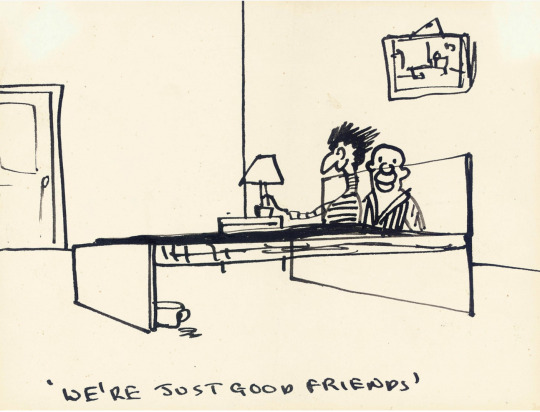
This is from 1958 in art college.
It also looks gay.
But on top of that, it looks like a bad caricature of Bert and Ernie who wouldn't exist for another 11 years.
#hmm#1958#art college#a hard day’s night film#how many lines did they add#john#bug art#queer bugs#prebugs#i dont think john moves out to gambier terrace with stu until 1959#johns drawings
74 notes
·
View notes
Video
instagram
Let’s ride! #prebug (at Los Feliz, Los Angeles) https://www.instagram.com/p/BzWNNPUAqFxn5SVTmfxmLONoHZI0G6X9fwzXN80/?igshid=wdj1j0hs5sjk
0 notes
Text
Like, even the language of choosing. Where did that come from? What dad makes you choose between him and your friend?

“A few months after meeting, John and Paul had engineered a way to meet secretly together…” - Lennon, Ray Coleman
The way their whole relationship was framed as a love affair from the very start.
#like ok i get that your 1950s father doesnt want you joining a rock band and slagging off school and leaving town#but like its not as if it would have been foreign to him being a musician himself#like dude writings on the wall#having a piano and other instruments in the house and your son is writing songs at 15#the language of choosing sounds like more than just music#and it seems like a conflict that continues to come up across the decade#filed under mclennon reasons#jim mccartney#john vs jim#john and paul#1957#prebugs#understanding paul#songwriting#eta it looks like the language of {choosing} comes from johns pov so its a loaded one#fathers and sons
235 notes
·
View notes

